Are you looking for your next great American adventure? Hit the road on the Oregon Trail route and discover stunning scenery, hidden gems and rich American history at every stop.
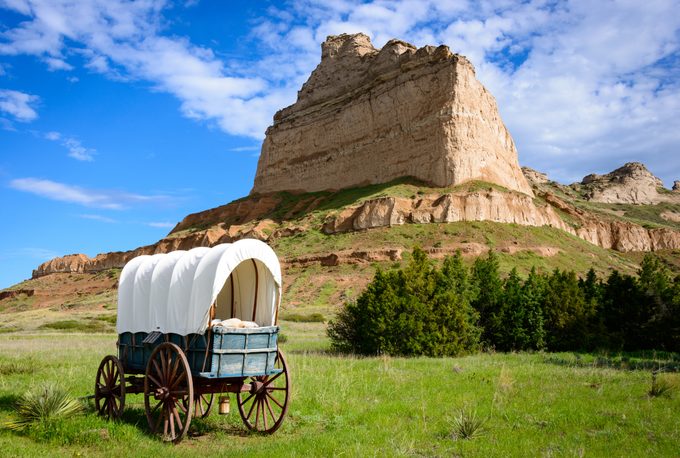
Your Road Trip Guide to the Oregon Trail Route

The Oregon Trail road trip starts in Cannon Beach on the rugged coast of Oregon and takes you through Idaho, Wyoming, Nebraska, Iowa, Illinois, Indiana, Ohio, Pennsylvania and New York before finally ending in the seaside community of Provincetown, Massachusetts. Along the Oregon Trail route, you’ll see mountains, wildlife, raging waterfalls, stunning hiking trails, prehistoric fossils and historic sites, and you’ll eat some of the best food you’ve had in your life.
The journey spans almost 3,300 miles, plus side trips, following Highway 20 for the majority of the trip. Plan to dedicate at least two weeks to this adventure to make the most of the incredible National Parks, museums and attractions you’ll see along the way. But if you’ve got the time, we suggest you go over your road trip essentials checklist and plan for a three-week adventure instead.
Ready for the road trip of a lifetime? Read on for your essential guide to the Oregon Trail route.
Get Reader’s Digest’s Read Up newsletter for more travel, tech, news, cleaning, humor and fun facts all week long.
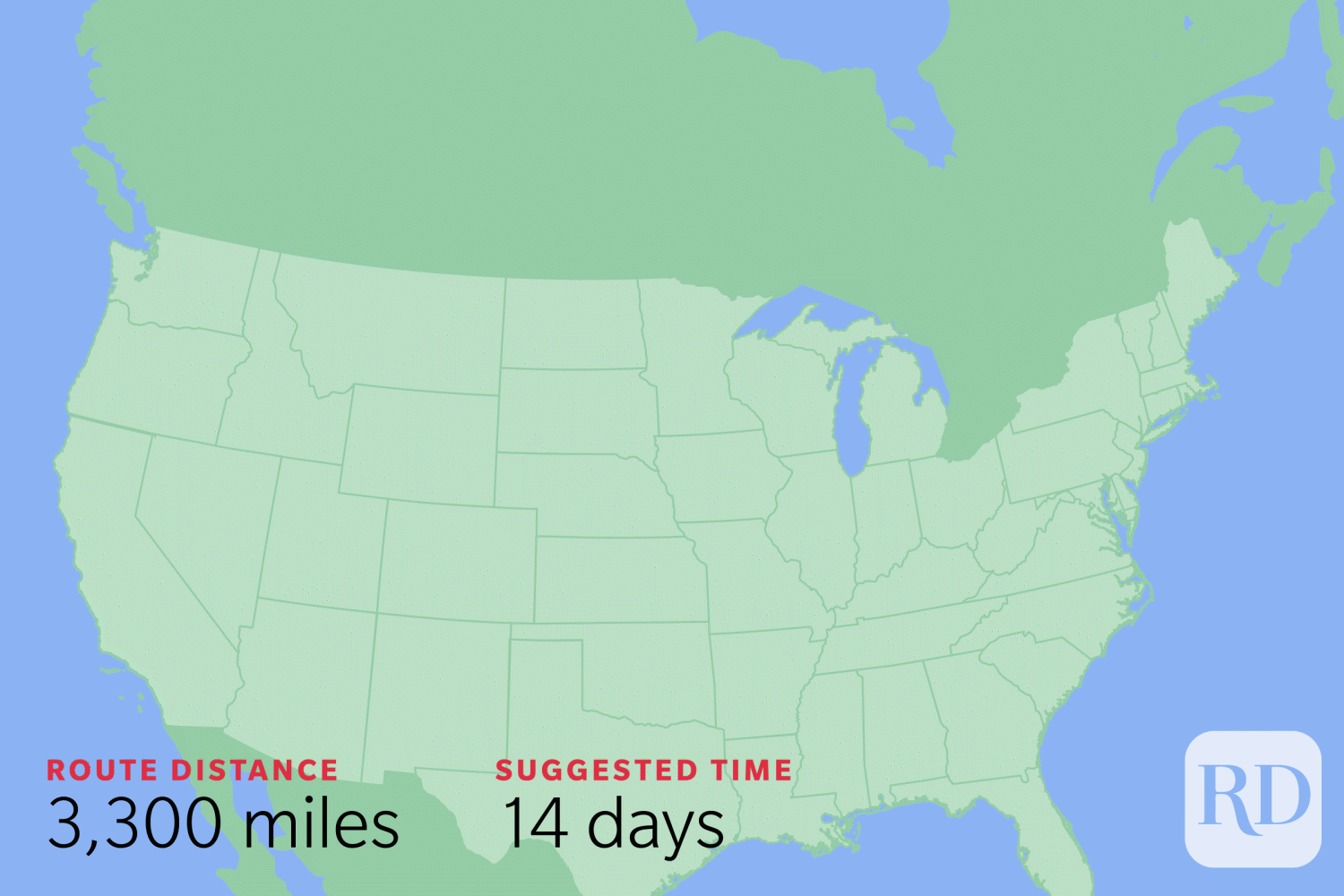
What was the Oregon Trail?
The historic Oregon Trail was a dangerous 2,000-mile trip westward across much of the United States. Much of the route was established by Lewis and Clark between 1803 and 1806, but it was missionaries tasked with converting Native Americans to Christianity who first traveled the trail in large numbers in the decades that followed.
In the mid-1800s, hundreds of thousands of pioneers traveled this route to forge new lives, as did miners seeking their fortune in the gold rush. By the end of the century, however, the Oregon Trail route was seldom used because the same journey could be completed in about a week on the railroad.
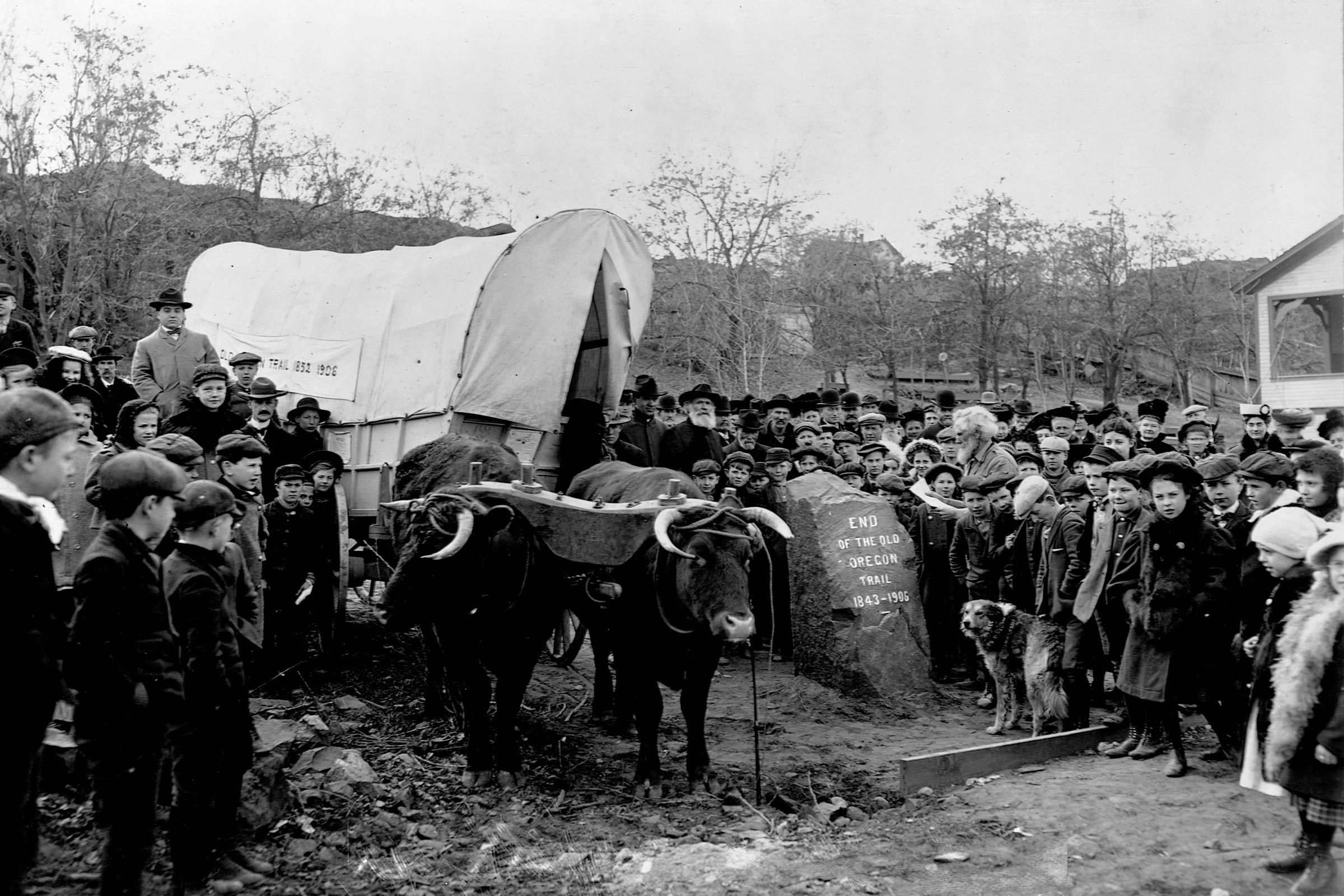
How long was the original Oregon Trail?
The historic Oregon Trail was 2,000 miles, and almost every step was fraught with peril. As many as 1 in 10 people perished along the way due to contaminated water, disease, the elements, confrontations with bears and other wildlife and skirmishes with the Native American tribes who’d lived there for thousands of years.
Where did the Oregon Trail start?
The historic Oregon Trail started in Independence, Missouri, and ended in Oregon City, Oregon. Since the journey was so dangerous, settlers had to leave no later than April or May in order to avoid heavy snow and extreme weather conditions. At its peak, so many pioneers traveled the historic Oregon Trail at the same time that they often had to follow each other’s wagons in a single file line.
How can you follow the Oregon Trail Route today?
Instead of heading west for 2,000 miles, start where the original Oregon Trail ended and work your way east for 3,300 miles. It may be longer, but the modern journey is much faster, thanks to cars. Also, you’re not at risk of dying of dysentery.
Oregon
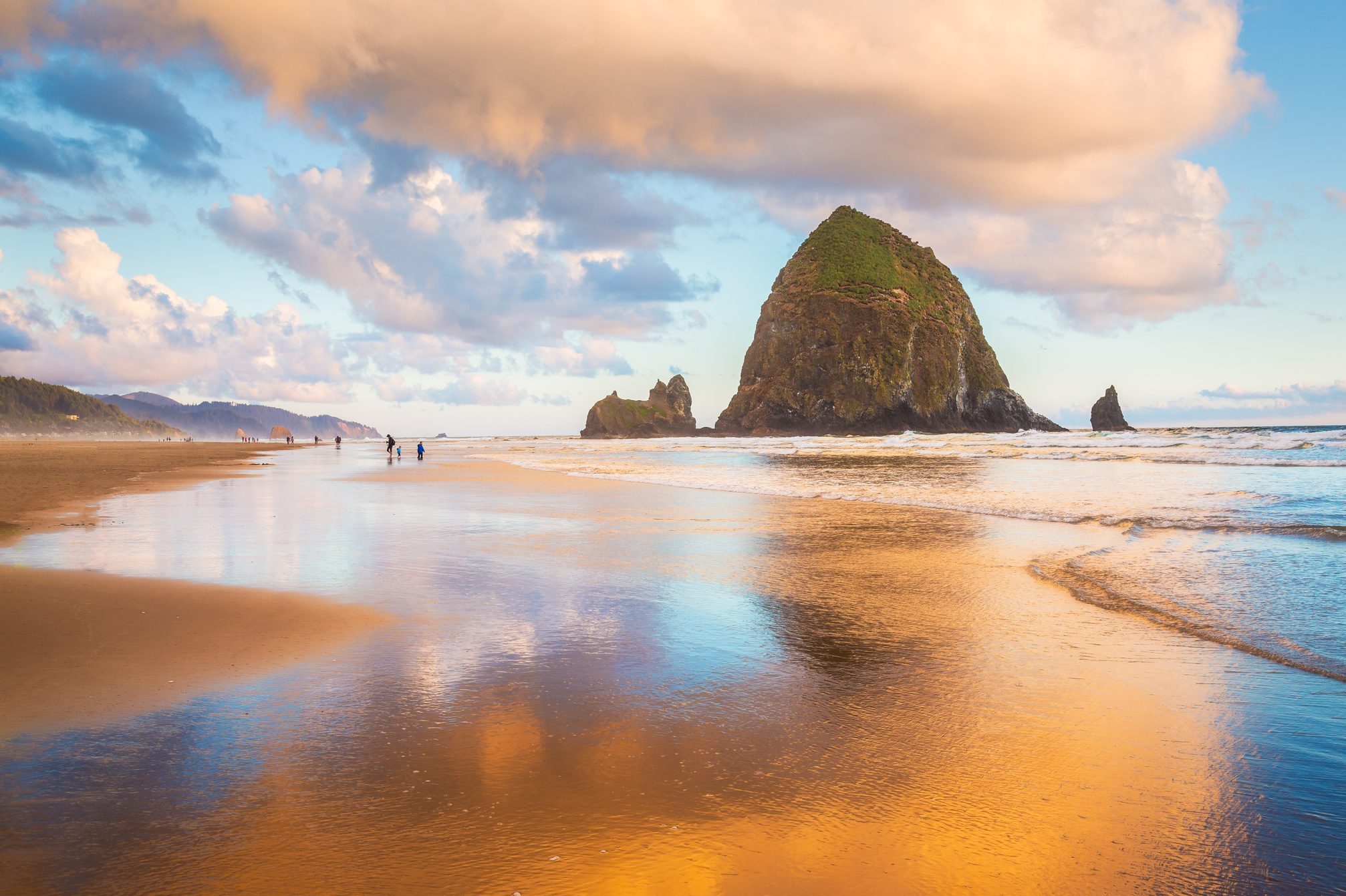
Route distance: 451 miles
Suggested length of time: 2 to 4 days
The Oregon Trail Road Trip starts on the Oregon coast in Cannon Beach, a town so alluring, you may never want to leave. The most famous landmark in town is Haystack Rock, a majestic 235-foot-tall sea stack rising from the shoreline. Downtown Cannon Beach is quaint and filled with boutiques and art galleries.
For lunch, enjoy some of the best food and beer in town at Public Coast Brewing Company. Afterward, walk the lovely paved trails at Ecola State Park to take in views of the historic Tillamook Rock Lighthouse. Spend the night steps away from Haystack Rock at Surfsand Resort, and enjoy fantastic amenities including a pool, restaurant, fitness center and beachfront cabana service in season.
From Cannon Beach, you’ll head to the fabulous city of Portland. Stay at The Porter Portland, and you’ll be within walking distance of many of the city’s top attractions. It’s a beautiful hotel with a pool, a rooftop bar with stunning views of the city and several options for dining. Be sure to take the two-block walk to Tom McCall Waterfront Park to stroll along the Willamette River.
Afterward, check out Powell’s City of Books, the largest independent bookstore in the world. Also not to be missed are the incredible Portland Japanese Garden and the End of the Oregon Trail Interpretive Center in nearby Oregon City. For dinner, return to your hotel for a meal of traditional Italian food prepared with fresh ingredients from the Pacific Northwest at Terraane Italian Kitchen and Bar. (Don’t miss this, it’s a meal you’ll remember for the rest of the trip.)
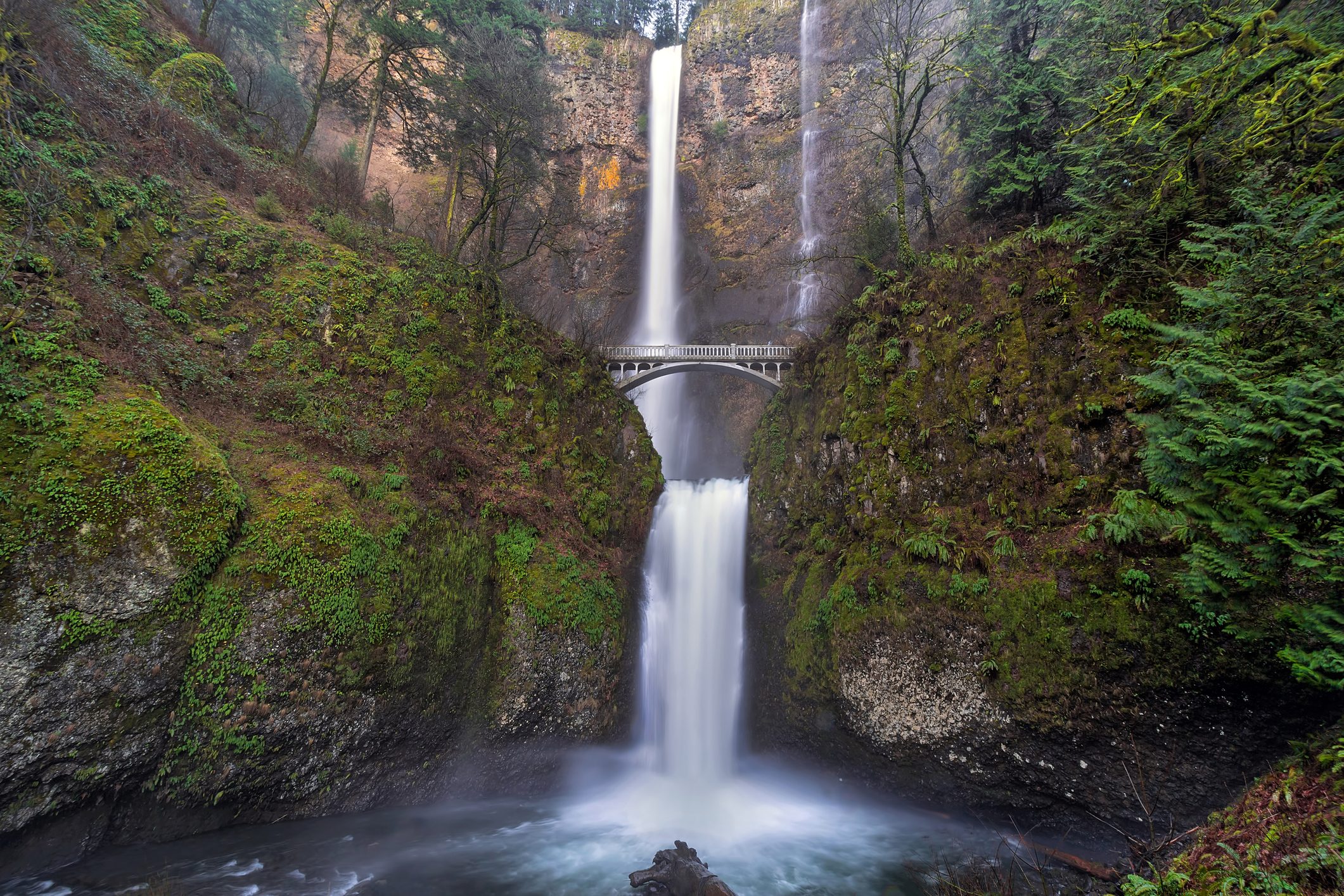
Next, you’ll depart for the oldest scenic route in the country—the Historic Columbia Scenic Highway. It’s somewhat of a detour, but the breathtaking views of the Columbia Gorge make it worth your time. There are plenty of scenic overlooks and pullouts along the way, along with opportunities for hiking, including the stunning views from the trails at Multnomah Falls, one of the most beautiful waterfalls.
Be sure to stop in Hood River, a town famous for kite surfing (even if you’re not interested in trying it yourself, it’s fun to watch from the windows of one of the city’s many breweries). From there, you’ll drive a little bit further to The Dalles for the Columbia Gorge Discovery Center and Museum to learn more about the history of the area and the wildlife that call it home. For lunch, order the grilled cheese on sourdough at Sunshine Mill. They also produce outstanding wine, so be sure to do a tasting.
Once you leave The Dalles, you’ll head down to Madras and take another short detour to Bend, one of the most stunning mountain towns in America. Here you’ll find hiking trails, underground cave systems, kayaking and a charming downtown filled with shops, restaurants and breweries. This area is a good place to spend the night because there will be fewer lodging options as you drive through the rest of Oregon.
There is no better place to stay than Brasada Ranch, located just outside of Bend in Powell Butte. Guests can choose between hotel-style rooms or private cabins with views of the golf course and the Cascade Mountains. You won’t run out of things to do here with multiple swimming pools, hiking trails, tennis courts, fishing ponds, horseback riding, great restaurants and more.
The majority of the rest of your time in Oregon will be spent driving through the lonely beauty of largely rural, even empty regions. Don’t miss the John Day Fossil Beds National Monument in Kimberly, where you’ll be awed to see ancient fossils from extinct plant life and animals like saber-tooth cats in a jaw-dropping setting of colorful bluffs and ancient hills.
Idaho
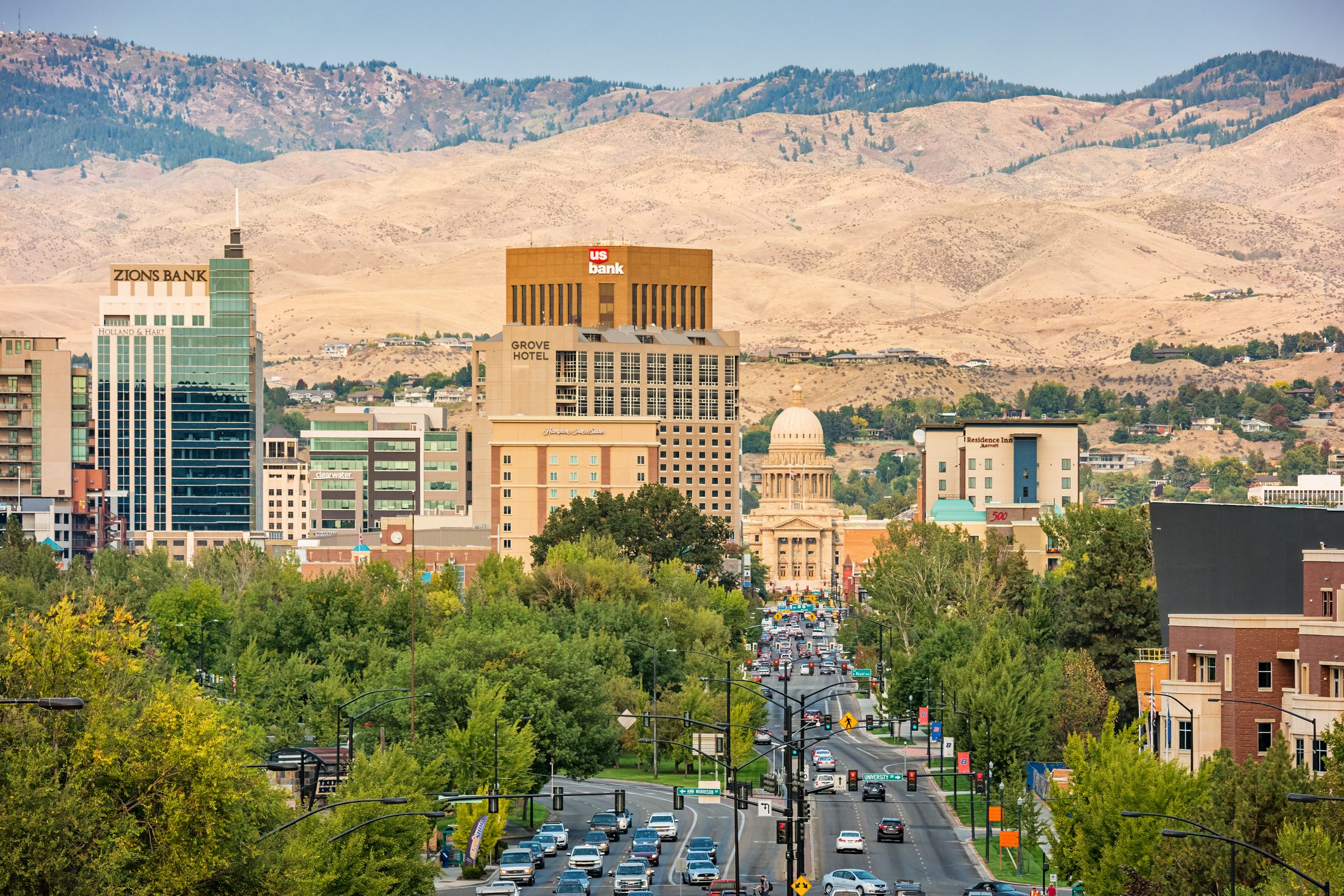
Route distance: 400 miles
Suggested length of time: 2 to 3 days
Idaho is a beautiful state, and it doesn’t get nearly as much attention as a vacation destination as it deserves considering Highway 20 stretches just over 400 miles here. Your first stop there will be the replica of Fort Boise in Parma. The original fort was built in 1834, and it was an essential supply stop along the Oregon Trail route. Also worth exploring—to learn about the hardship that pioneers faced along the Oregon Trail route—is the informative Oregon Trail History and Education Center at Three Island Crossing State Park in Glenn’s Ferry.
Next on your road trip along the Oregon Trail route, you’ll head to Idaho’s capital, Boise. The Grove Hotel is located right downtown and is a great place to stay and explore the city’s charms on foot. The hotel offers bicycle rentals, an outstanding restaurant and a pool. One of the top tourist attractions in Boise is the Old Idaho Penitentiary Site, a prison built in 1872 that immerses you in the life of prisoners over 100 years ago, from cells to gallows and solitary confinement.
Another highlight is the Anne Frank Human Rights Memorial, a small but moving park with exhibits dedicated to the life of Anne Frank and other human rights pioneers. For dinner, Han’s Chimaek serves large portions of amazing Korean comfort food at reasonable prices. Also good is Petite 4, especially on Friday nights when they roll a cart of fresh oysters onto the patio.
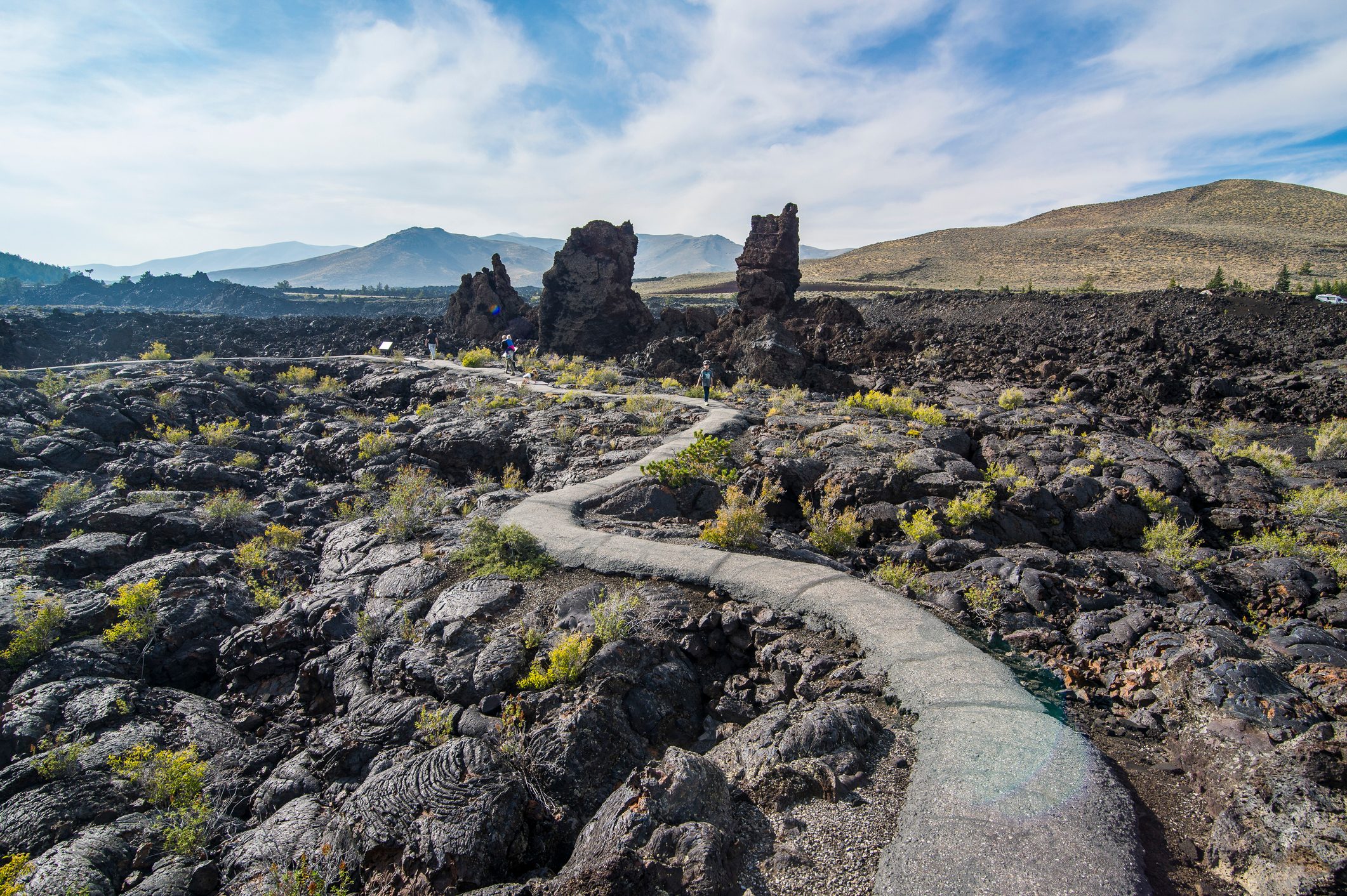
After Boise, journey to Bruneau Dunes State Park in Bruneau. It’s home to the tallest single-structured sand dune in North America. You can rent sandboards on-site if you’re feeling adventurous enough to ski its surface. Another not-to-be-missed stop is a famous rock formation: the Craters of the Moon National Monument and Preserve in Arco, a giant, hardened black lava field that does indeed look like something otherworldly. Be sure to explore the lava tubes, which were caves formed by lava beneath the surface. When you’re through, be sure to stop by Pickle’s Place for a burger with a side of delicious fried pickles.
Stay the night at the La Quinta Inn and Suites in Idaho Falls; there will be fewer lodging options until you reach Wyoming. There are also a number of restaurants, like the excellent Copper Rill, and grocery stores, so you can stock up on all the best road trip snacks.
Wyoming
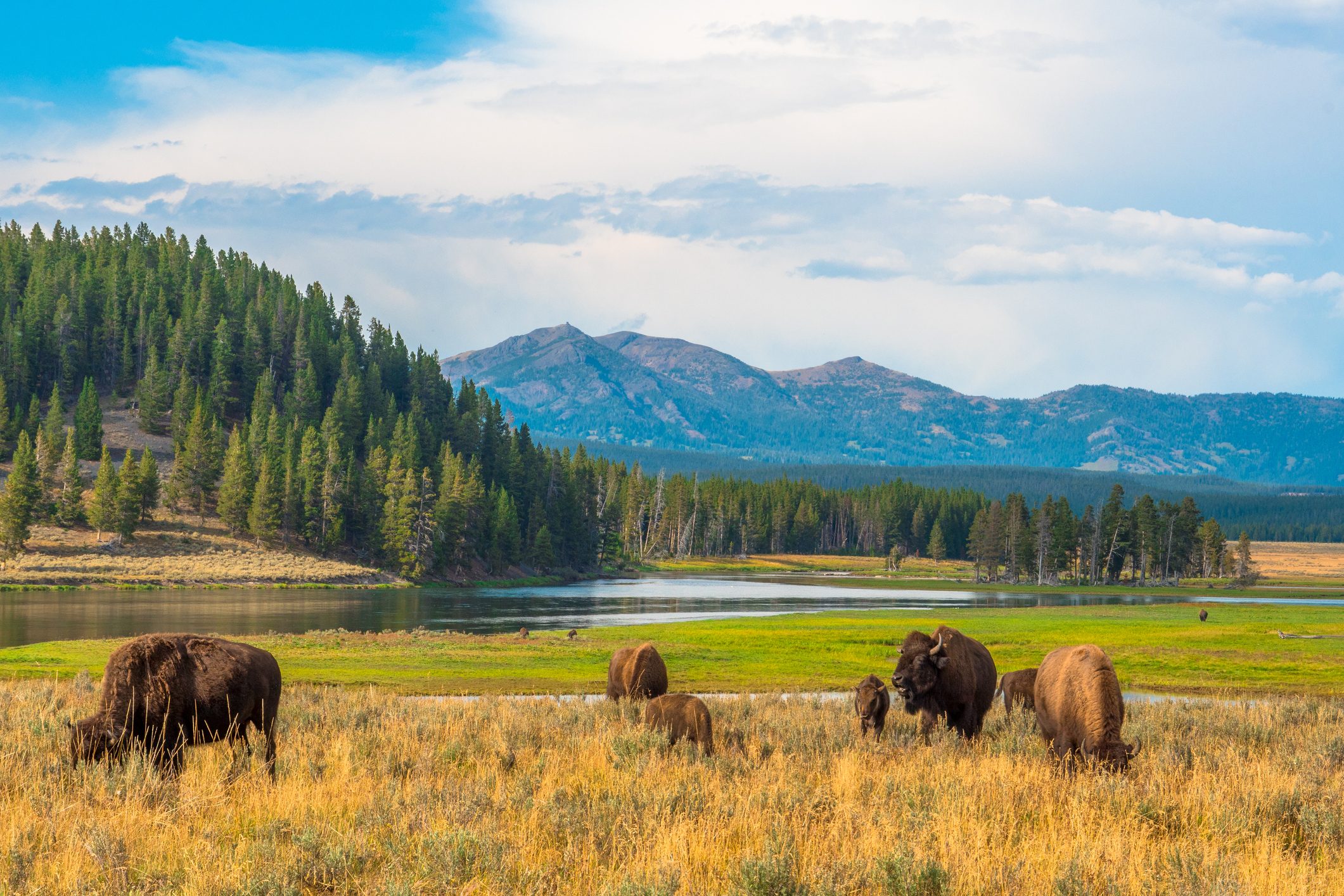
Route distance: 525 miles
Suggested length of time: 2 to 4 days
Your first stop will be the incredible Yellowstone National Park, where you’ll find geysers, hot springs, canyons, waterfalls, lakes, bears, moose, bison and so much more. There are wonders to behold everywhere you turn, including Old Faithful, Mammoth Hot Springs and the Grand Canyon of the Yellowstone River. Lodging near the park tends to be expensive, so your best bet for finding cheap accommodations is to head to someplace like the Best Western Weston Inn just across the Montana border, where kids stay free and free breakfast is included to help offset the expense.
Another must-see in Wyoming is the Legend Rock State Petroglyph Site, where over 300 images were carved into sandstone cliffs 2,000 to 10,000 years ago. The Wyoming Dinosaur Center in Thermopolis is also in the area and filled with fascinating dinosaur exhibits.
Next, you’ll drive through the stunning, 2,500-foot-deep Wind River Canyon as you head toward Caspar to soak in some culture at the world-class Nicolaysen Art Museum. There are a number of chain hotels in the area, including the reasonably priced Days Inn, with free breakfast and a pool. Before you retire for the night, treat yourself to one of the best meals in town at FireRock Steakhouse.
Before you leave Wyoming, be sure to visit Guernsey. It’s a slight detour but worth it to see the best-preserved set of wagon wheel ruts on the entire Oregon Trail route. Another evocative site in this area is Register Cliff, where more than a thousand pioneers and travelers carved their names while passing through in the mid-1800s. Fort Laramie National Historic Site is just outside of town and another great place to learn more about the area’s history.
Nebraska
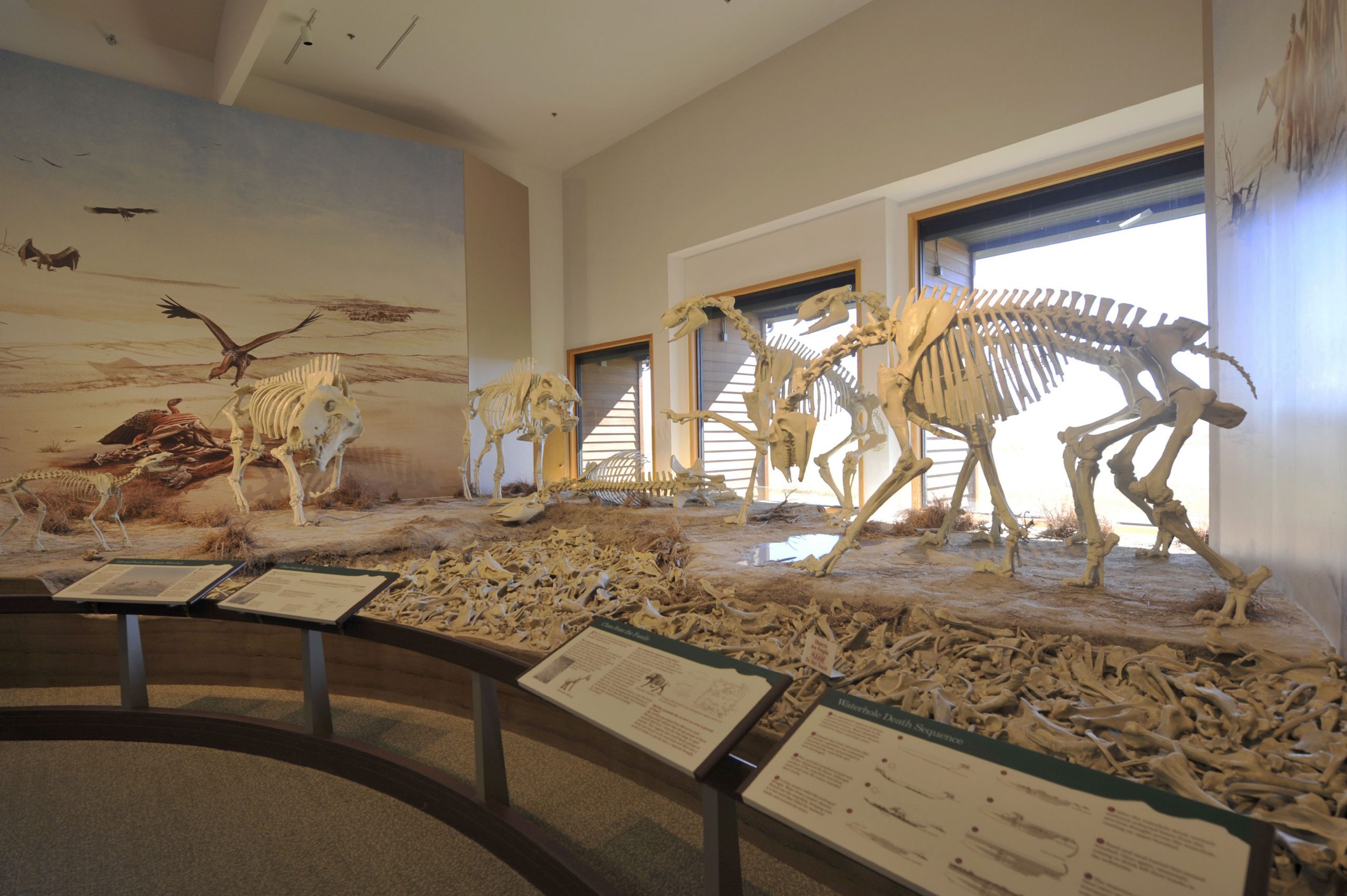
Route distance: 430 miles
Suggested length of time: 2 to 3 days
Be sure to allocate time for the Agate Fossil Beds National Monument in Harrison, where you’ll see the 20 million-year-old remains of giant pigs the size of bison, proto-rhinos and other extinct species from the Miocene era.
Next, drive to Fort Robinson State Park. Today, this is a beautiful property where buffalo and longhorn roam free, but it has a dark history. This is where an unarmed Crazy Horse was killed by the sharp blade of bayonets while being held prisoner by the U.S. Army. There is an excellent museum on-site, plus often live events and reenactments. Another notable fort in Nebraska is Fort Kearny State Historic Park, which is filled with reconstructed buildings and interactive exhibits.
Nebraska is also a good place to take a side trip to US-385 to Mount Rushmore and the still-in-progress but no less impressive, majestic Crazy Horse Memorial. When finished, it will be 10 times the size of Mount Rushmore. As you head back into Nebraska, be sure to stop by Carhenge, an enormous replica of Stonehenge built entirely with American cars.
Another Nebraskan Highlight is Scotts Bluff National Monument, a majestic 800-foot-tall bluff that served as a landmark for the early pioneers on the Oregon Trail. Be sure to bring your camera to take pictures from the stunning overlooks along the hiking trails. For dinner, grab one of the best burgers in town at Union Bar and Grill. Spend the night nearby at Monument Inn and Suites and enjoy a complimentary breakfast in the morning.
And make sure you don’t leave the state without observing a live dig at Ashfall Fossil Beds State Historical Park, where prehistoric herds of animals were preserved intact after a volcanic eruption.
Iowa
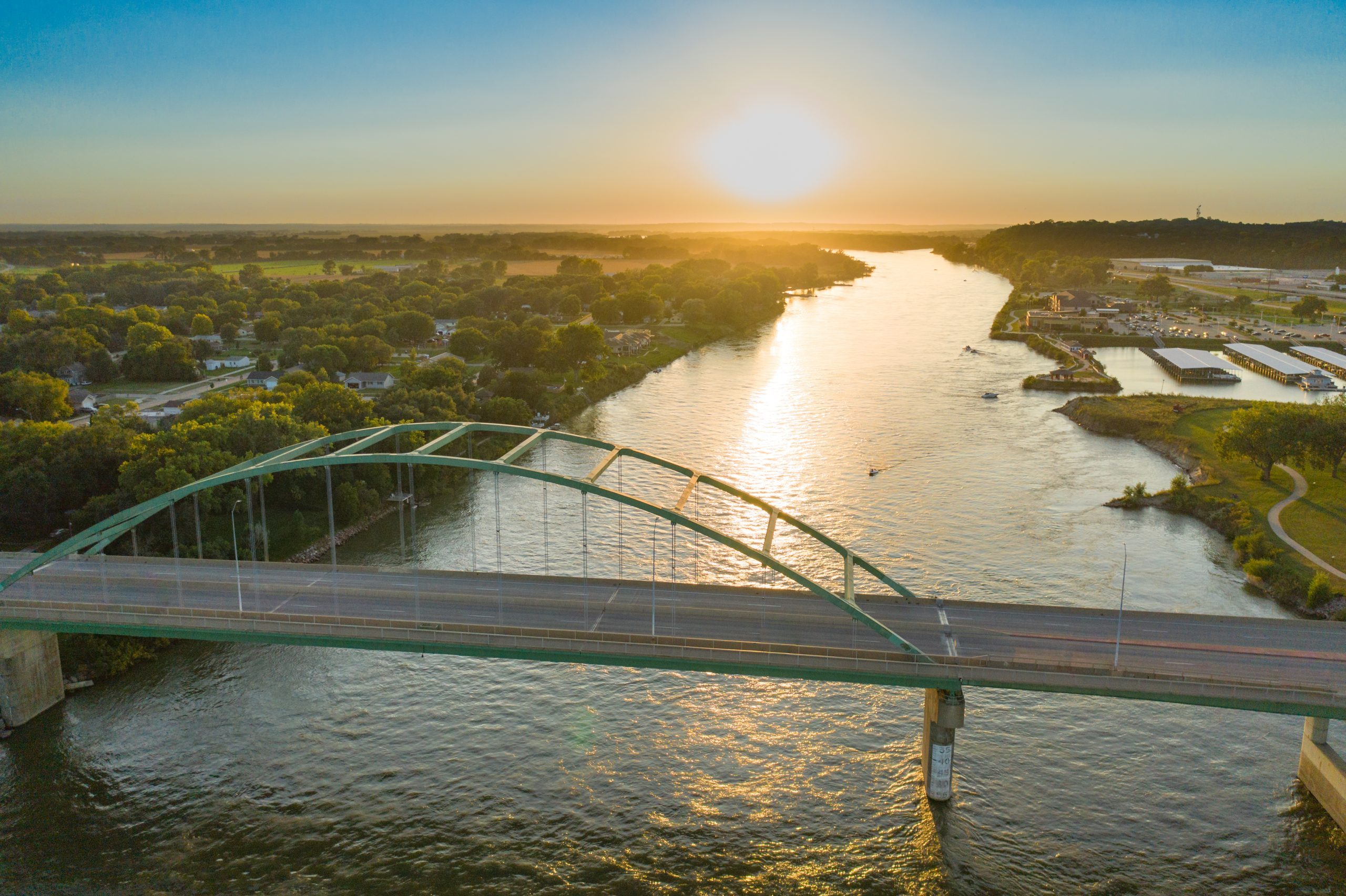
Route distance: 298 miles
Suggested length of time: 1 to 2 days
Sioux City is a fantastic place to learn more about the journey of Lewis and Clark. You’ll find the Sergeant Floyd Monument, a 100-foot tall obelisk dedicated to the only member of the Discovery Corps to die on the mission. In addition to its historic importance, this site also offers breathtaking vistas of the Missouri River. The Sioux City Lewis and Clark Interpretive Center with interactive exhibits is also nearby.
For dinner, Kahill’s Chophouse offers creative takes on local fare in dishes like cast-iron shrimp and duck sausage. New Victorian Inn and Suites is an excellent place to stay with a pool, free breakfast and reasonable rates.
Also worth visiting in Iowa is Cedar Rock State Park in Quasqueton, which boasts a Frank Lloyd Wright–designed house and lovely hiking trails. And of course, you can’t leave the state without visiting Dyersville to see the Field of Dreams Movie Site, cornfield, baseball diamond and farmhouse.
Illinois
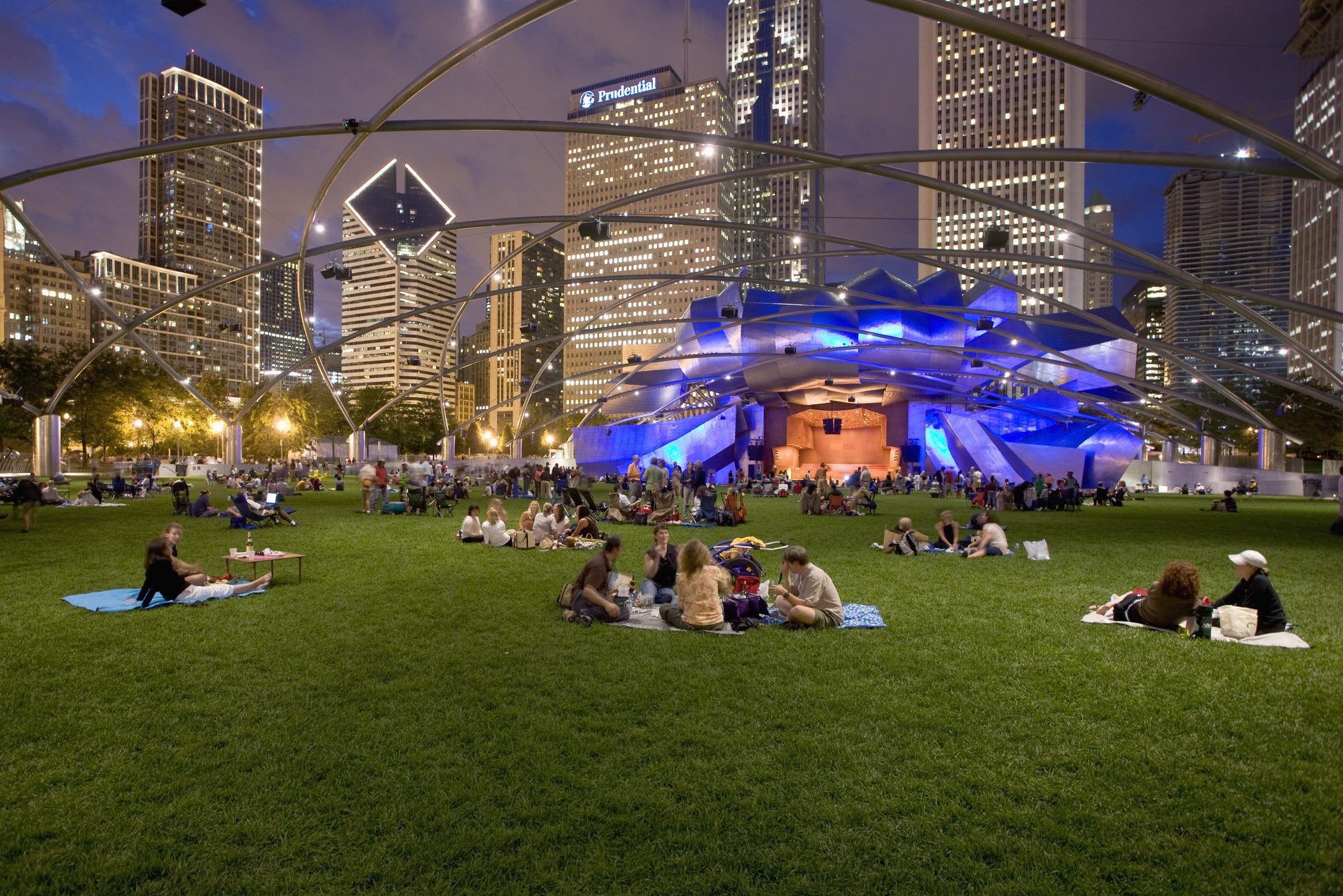
Route distance: 200 miles
Suggested length of time: 1 to 3 days
Your first stop will be Galena, one of the prettiest towns you’ll ever see. It’s full of beautiful 19th-century homes and buildings, including the Ulysses S. Grant Home. Galena is best experienced on foot, so be sure to park your car and spend some time exploring the shops downtown.
Of course, no trip to Illinois would be complete without a stop in Chicago. The Kimpton Gray Hotel is the ideal home base for this leg of the trip. Located in a beautifully renovated building from 1894, the Kimpton Gray Hotel is within walking distance to Millennium Park—a gorgeous 25-acre lakefront park featuring a Frank Gehry–designed outdoor concert pavilion, lush botanicals and stunning statues.
Other Chicago must-sees include the world-renowned collection at the Art Institute of Chicago and the iconic Wrigley Field. For dinner, walk over to Remington’s for steaks, salads or sandwiches served with terrific craft cocktails.
Indiana
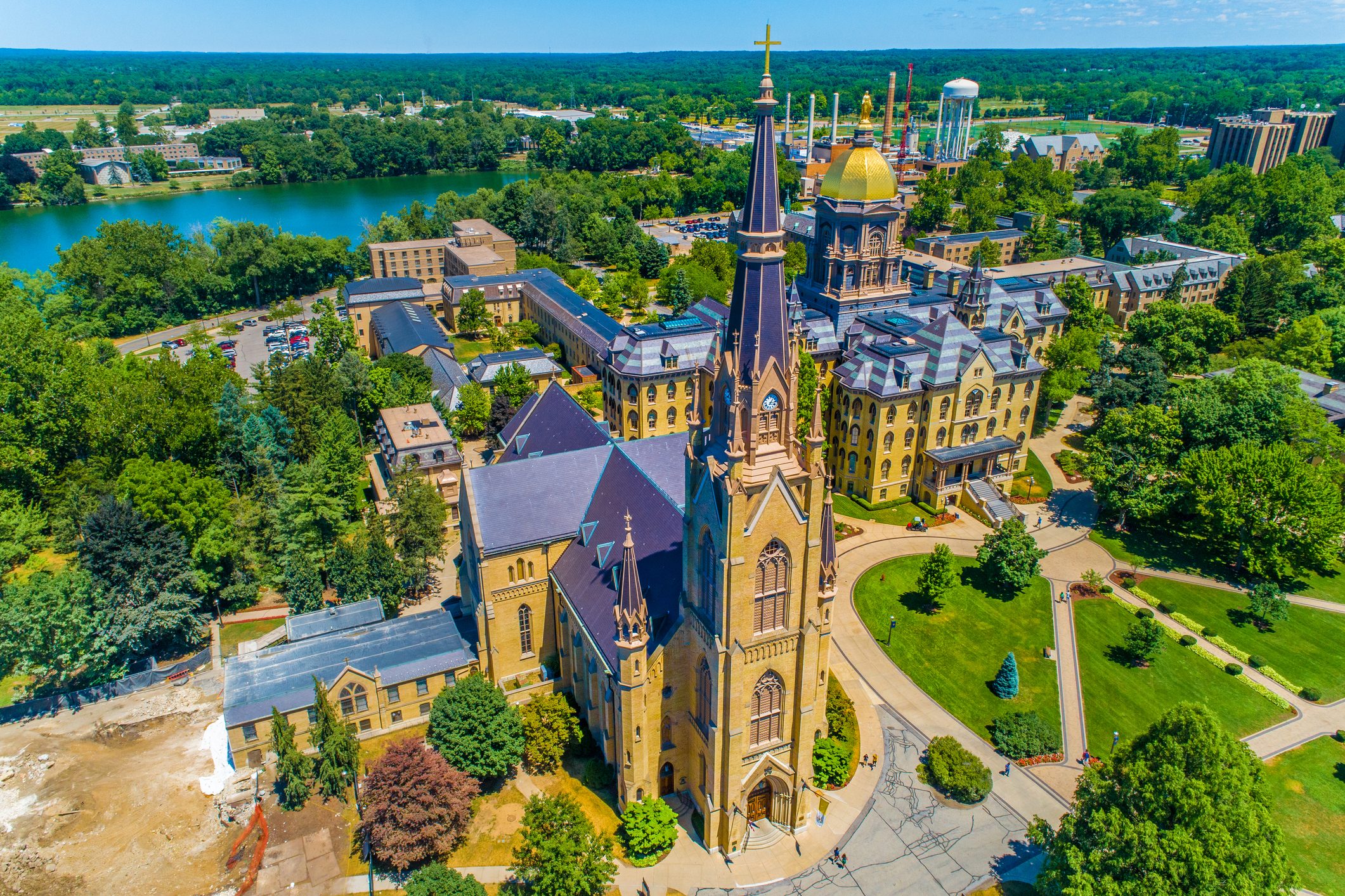
Route distance: 154 miles
Suggested length of time: 1 to 2 days
The Oregon Trail map will guide you through 154 miles of Indiana. You’ll start in a heavily industrial area but be rewarded when you reach the Indiana Dunes to explore sand dunes, beaches, forest groves and hiking trails.
Next, you’ll drive to South Bend to stroll the perfectly manicured grounds of the University of Notre Dame. Car buffs will also want to tour the Studebaker National Museum. The best meal in all of Indiana awaits you in Tippecanoe Place, located in the stately Studebaker mansion. For well-priced accommodations, Aloft South Bend is just 2 miles from the University of Notre Dame, and it has perks like a pool, free bottled water and free coffee.
Your last destination in Indiana will be Indiana’s Amish Country, where you’ll see gorgeous landscapes and farms. Visiting here requires a special level of attention; you’ll be sharing the roads with horse-drawn carriages, so it’s important to drive carefully. Also, being photographed goes against Amish religious beliefs, so be aware that filming or taking pictures of them is disrespectful.
To learn more about the Amish and Mennonite way of life, don’t miss the Menno-Hof Amish-Mennonite Visitors Center in Shipshewana. If you’re feeling hungry afterward, the Blue Gate Restaurant and Bakery is famous for its buffet.
Ohio
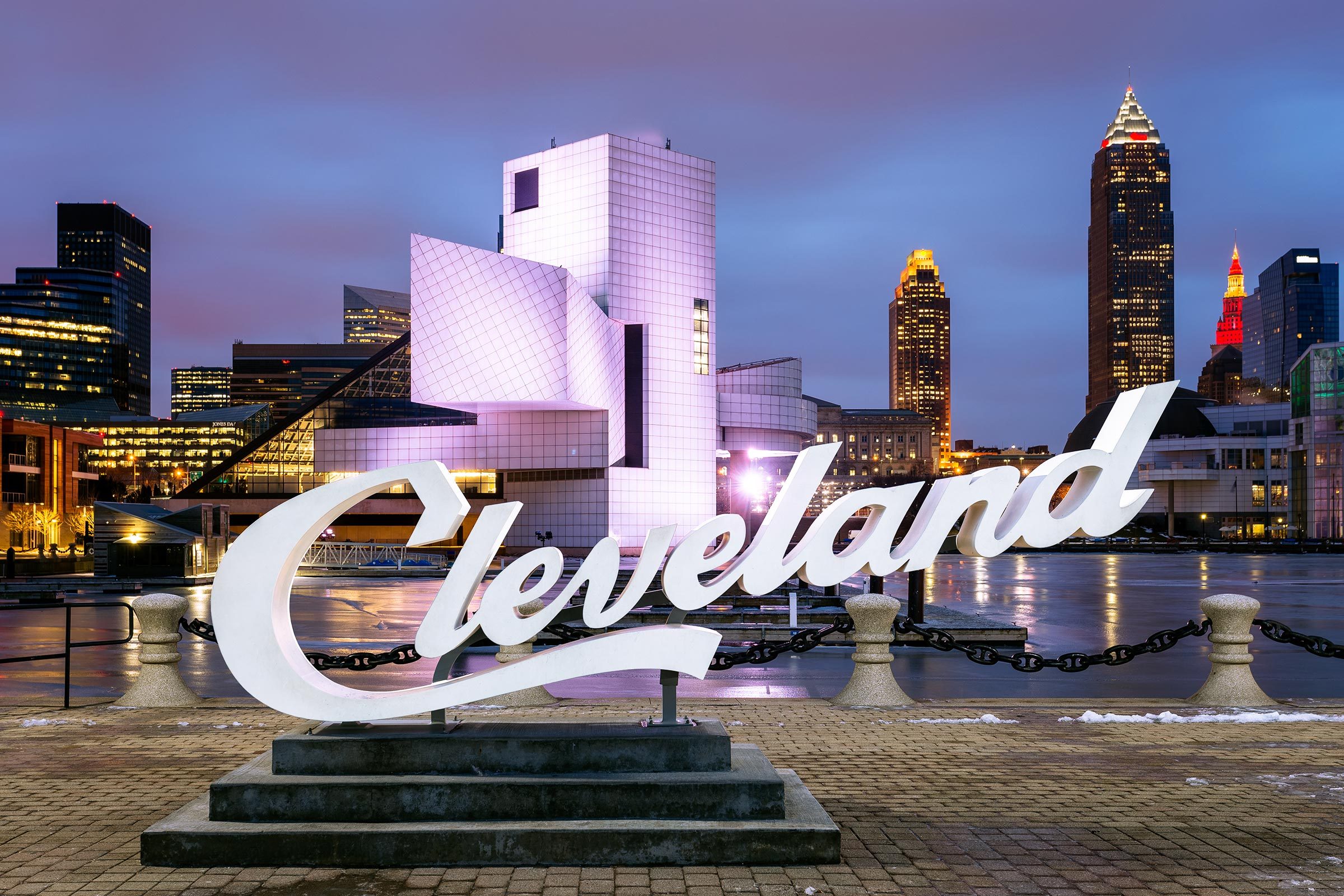
Route distance: 259 miles
Suggested length of time: 1 to 3 days
The highlight of the trip is the city of Cleveland, which is home to several unforgettable museums, including the Rock and Roll Hall of Fame, where you can easily get lost in musical history for an entire day. Another must-see is the free-admission Cleveland Museum of Art.
The Hyatt Regency Cleveland at The Arcade is a half-mile from The Rock and Roll Hall of Fame at The Arcade, which was the first indoor shopping center in North America when it opened in 1890. It’s a gorgeous art deco structure, sometimes referred to as the Crystal Palace because of its glass ceiling. While you’re there, be sure to try the delicious pierogi pie at Pizza 2016.
Also worth seeing during your time in Ohio is the first Mormon temple in Kirtland and the Hubbard House Underground Railroad Museum in Ashtabula, where you’ll learn more about how enslaved human beings were smuggled into a life of freedom in Canada.
Pennsylvania
Route distance: 47 miles
Suggested length of time: 1 day
Stop and have lunch in the hard-working city of Erie, which is a major manufacturing hub. Head down to the shores of Lake Erie to see the Flagship Niagara—a full-sized replica of an 1813 flagship. Then drive over to the Lawrence Park Diner for a bowl of soup in a historic train car. Before you leave town, take the kids to Splash Lagoon, an 80,000-square-foot indoor waterpark.
New York
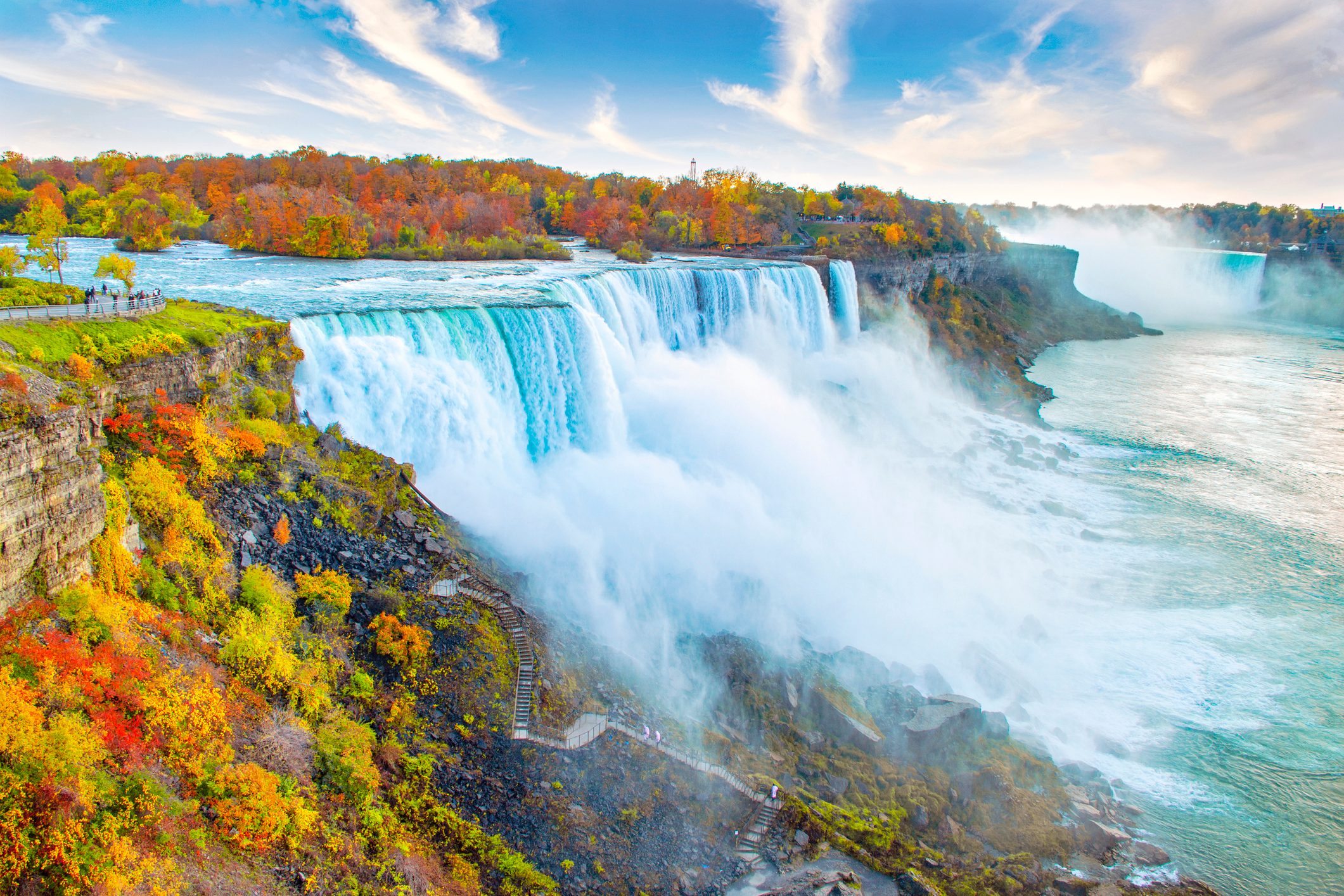
Route distance: 376 miles
Suggested length of time: 2 to 3 days
In New York, your first stop will be Lake Erie Wine Country. Even if you’re not a wine lover, you’ll still enjoy the stunning views of vineyards along the sparkling shores of Lake Erie. If you do love wine, there are more than 20 great wineries open for year-round tours and tastings.
Your next stop will be Niagara Falls, perhaps the most famous waterfall in the world. Be sure to ride the Maid of the Mist into the center of the falls. Another important historic site on this part of your trip is Seneca Falls, the site of the first convention for women’s rights. Be sure to explore the National Women’s Hall of Fame. Movie buffs should also take note of the fact that Seneca Falls served as the inspiration for Bedford Falls in Frank Capra’s classic film It’s A Wonderful Life.

Cooperstown is a worthy detour while you’re in this part of the state. This tiny town was founded in 1786 by the father of James Fenimore Cooper, who wrote The Last of the Mohicans. Today, it is home to picturesque streets and lovely period architecture. It is also home to the National Baseball Hall of Fame and Museum, a place packed with exhibits and lore about the sport of baseball and the finest players to walk the field.
For dinner, Alex’s World Bistro offers dishes from around the world, so there’s sure to be something for everyone. The Landmark Inn is a historic hotel dating back to 1856 in the heart of downtown Cooperstown. It’s famous for its fabulous service and incredible gourmet breakfasts.
After Cooperstown, take the drive to Howes Cave, home of the Iroquois Indian Museum. You’ll find fascinating artifacts and artworks associated with the Iroquois Confederacy, along with an entertaining children’s museum. Once you leave, make your way to Howe Caverns, where you’ll take a guided tour through a 180-foot deep cave to a 100-foot tall waterfall.
Massachusetts
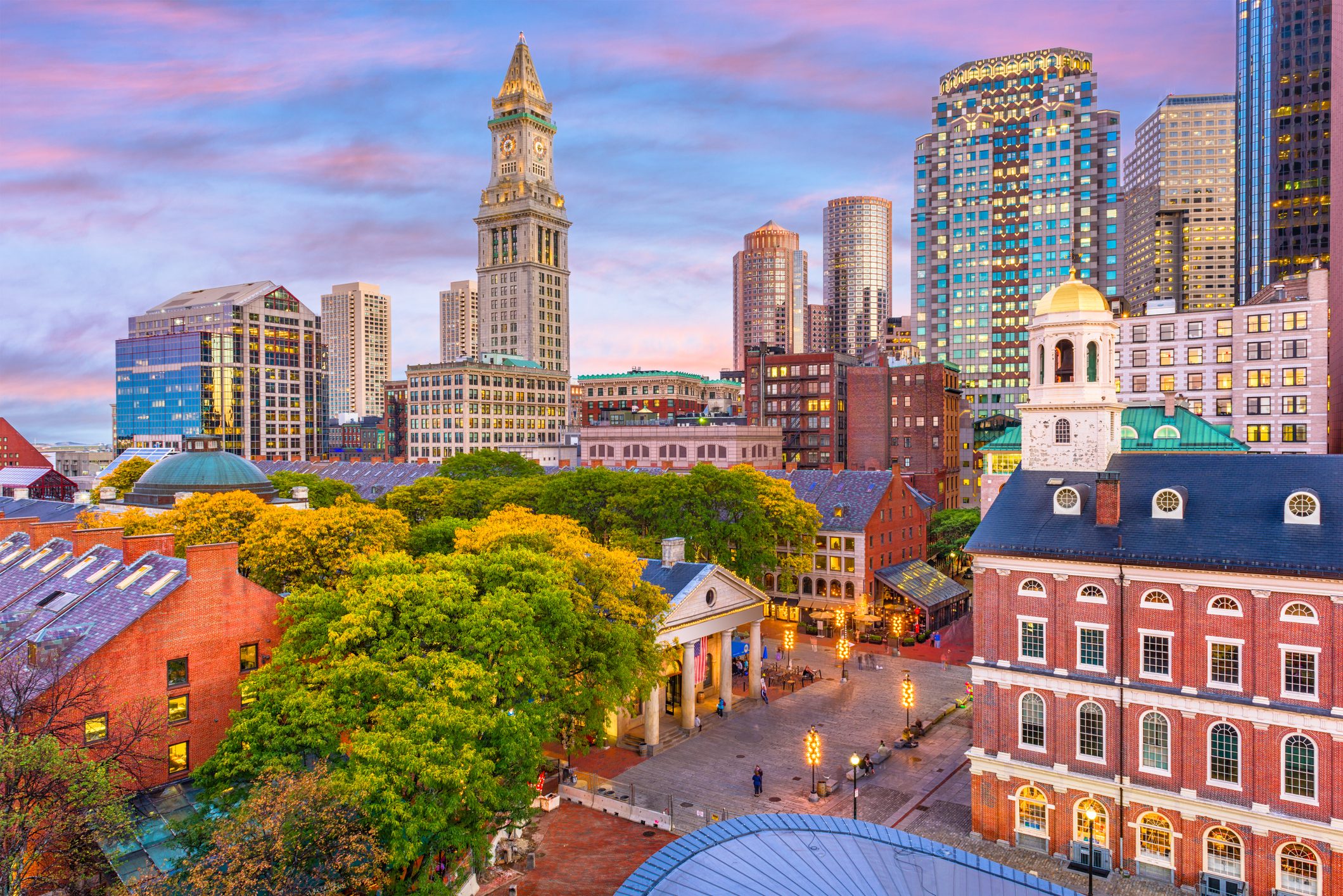
Route distance: 250 miles
Suggested length of time: 2 to 4 days
The last state on the Oregon Trail will be Massachusetts, where you’ll follow the more picturesque Highway 2 for about 250 miles. Known as the Mohawk Trail, this was one of the first official scenic byways in the country. Most of the route is rural and heavily forested, with plenty of rivers, lakes and waterfalls along the way. But you’ll also spend time in the exciting city of Boston, one of the best places in America to learn about history.
One of your early stops will be Historic Deerfield, where 11 houses, most dating back to the 1700s, have been lovingly restored and filled with artifacts, art and exhibits to immerse visitors in the lives of the earliest European colonists. The site also has impressive gardens demonstrating the agricultural techniques of the era.
Next on your road trip will be Boston, a place full of historic buildings, art and incredible examples of architecture. Staying at the Godfrey Hotel will put you within walking distance of many of the city’s restaurants and top attractions. The Boston Public Library McKim Building—overlooking Copley Square—is one of the best attractions in town (and it happens to be free). It’s housed in a stunning 1895 Renaissance Revival building and filled with murals, tapestries, sculptures and paintings.
Nearby is the Granary Burying Ground, a cemetery dating back to 1660, which is the final resting place of notable people like Paul Revere and John Hancock. Believe it or not, there are older cemeteries in Massachusetts. This area is also filled with several historic churches with breathtakingly elaborate stained glass windows.
For lunch, head over to the Quincy Market, a public food hall with over 75 vendors that originally opened in 1742. This is the perfect place to indulge yourself in a bowl of Boston’s iconic clam chowder. Other Boston highlights include daily tours of Fenway Park, where the Red Sox play.
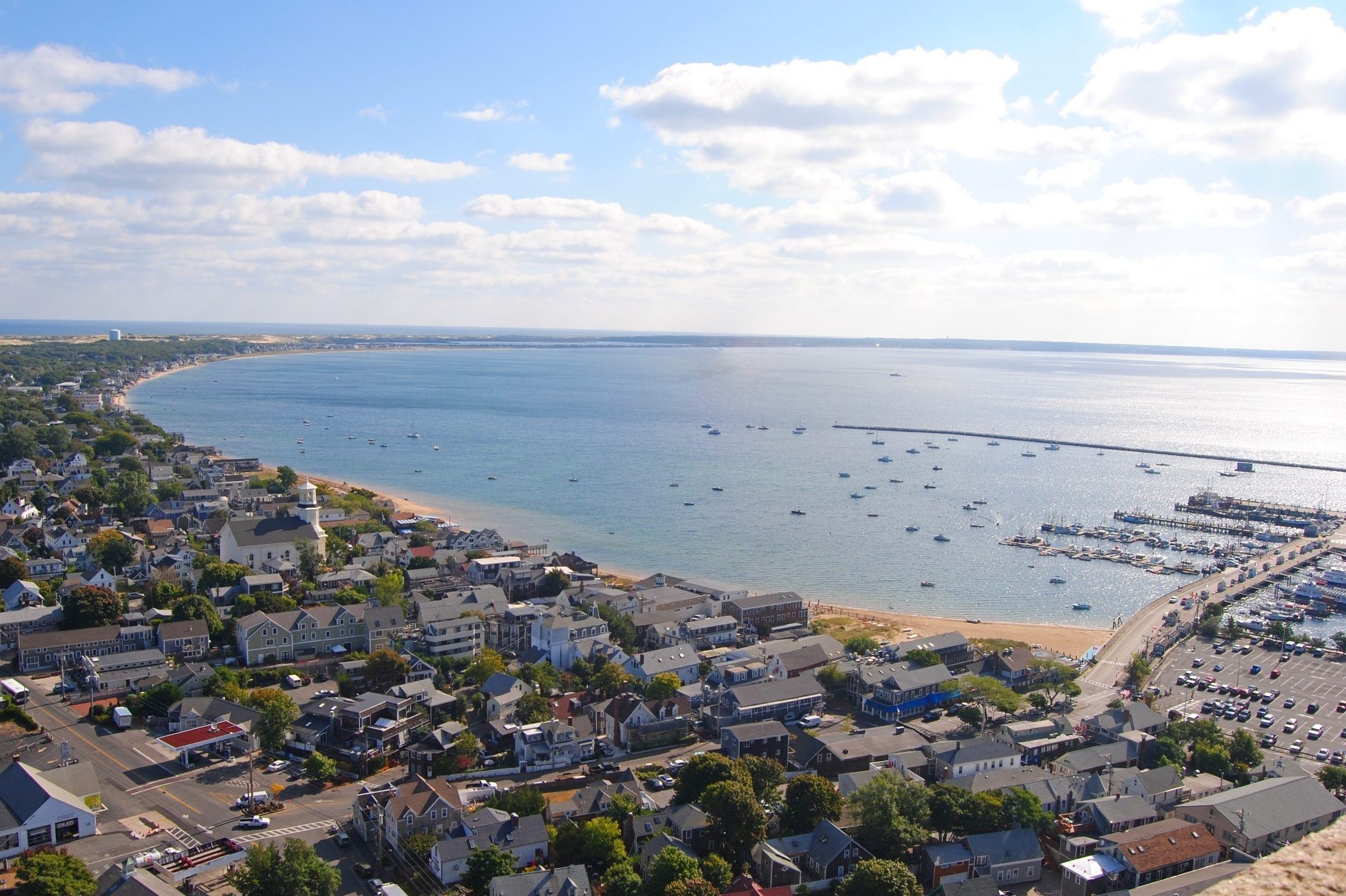
Next, you’ll depart from Boston for Plymouth, where you’ll take in sights like Plymouth Memorial State Park, the home of Plymouth Rock. It is also the home of a full-size replica of the Mayflower. Nearby, you’ll also find Plimoth Plantation, a living history museum where costumed re-enactors demonstrate what daily life was like for the colony.
Driving up Route 6A to the Cape Cod National Seashore is another incredible excursion. This route is dotted with lovely, historic small towns, with homes and churches dating back to the Colonial days. You’ll also find mile after mile of scenic parks and sandy beaches. Be sure to check out the aquarium and exhibits at Cape Cod Museum of Natural History. Afterward, grab an ice cream cone at Four Seas Ice Cream in Centerville, where they’ve been making ice cream in a former blacksmith’s shop since 1934.
You’ll end your tour of Massachusetts strolling the boardwalk in Provincetown, a vibrant, tip-of-the-Cape community filled with incredible shops and cafes. Don’t miss dinner at Helltown Kitchen, one of the finest restaurants in town. (The grilled pineapple salad and lobster risotto are both incredibly delicious!)
Cap off your stay with a night at the historic bed-and-breakfast The Inn at Cook Street, built in 1836. It’s within walking distance of town, which offers plenty of activity. Or you can just stay and enjoy the lush gardens and koi pond. You might even decide to stay an extra night to extend your amazing Oregon Trail road trip just a little bit longer.
Why trust us
Reader’s Digest has published hundreds of travel stories that help readers explore the world safely, easily and affordably. We regularly cover topics such as the best places to visit (and the best times to visit them), tips and tricks to zoom through airport security, flight-attendant secrets, hotel-room hacks and more. We’re committed to producing high-quality content by writers with expertise and experience in their field in consultation with relevant, qualified experts. We rely on reputable primary sources, including government and professional organizations and academic institutions as well as our writers’ personal experiences where appropriate. We verify all facts and data, back them with credible sourcing and revisit them over time to ensure they remain accurate and up to date. Read more about our team, our contributors and our editorial policies.
Sources:
- National Park Service: “Oregon – National Historic Trail”
- Oregon Parks and Recreation Department: “Ecola State Park”
- End of the Oregon Trail Interpretive Center
- National Park Service: “John Day Fossil Beds – National Monument Oregon”
- National Park Service: “Scotts Bluff – National Monument Nebraska”
- Iowa Department of Natural Resources: “Cedar Rock State Park”
- National Park Service: “Indiana Dunes – National Park Indiana”
- Tippecanoe Place























